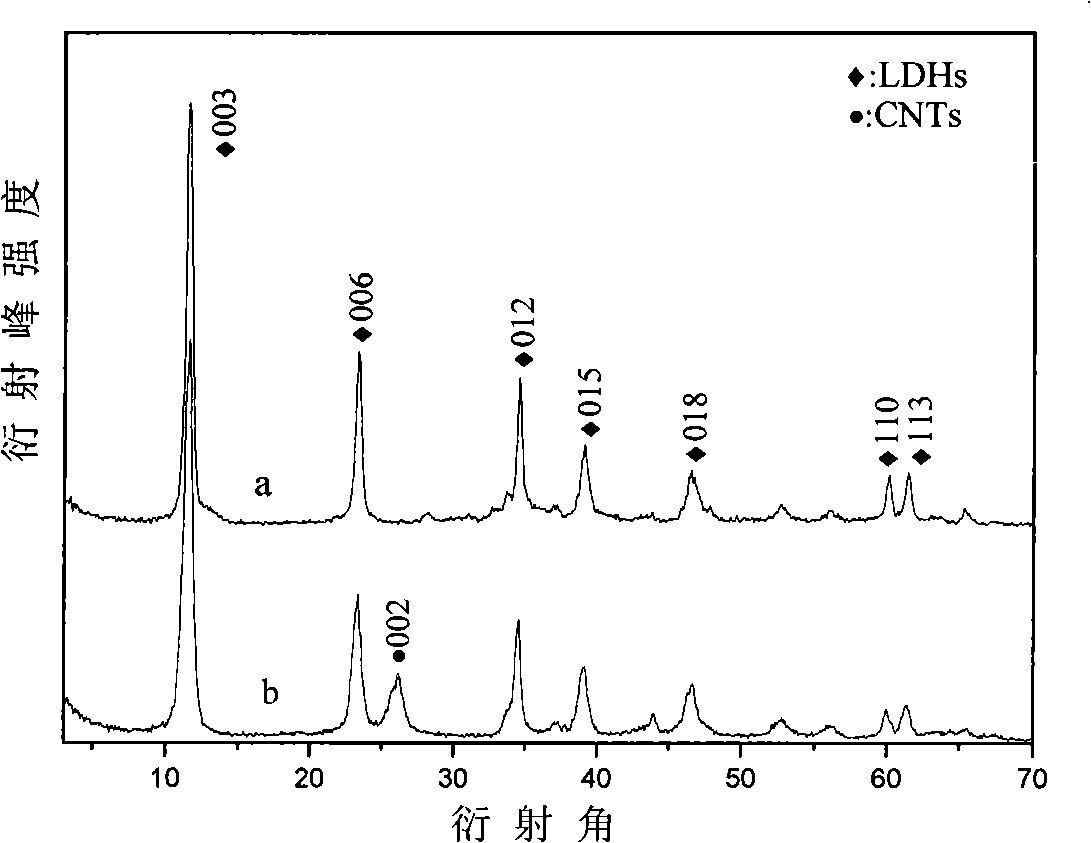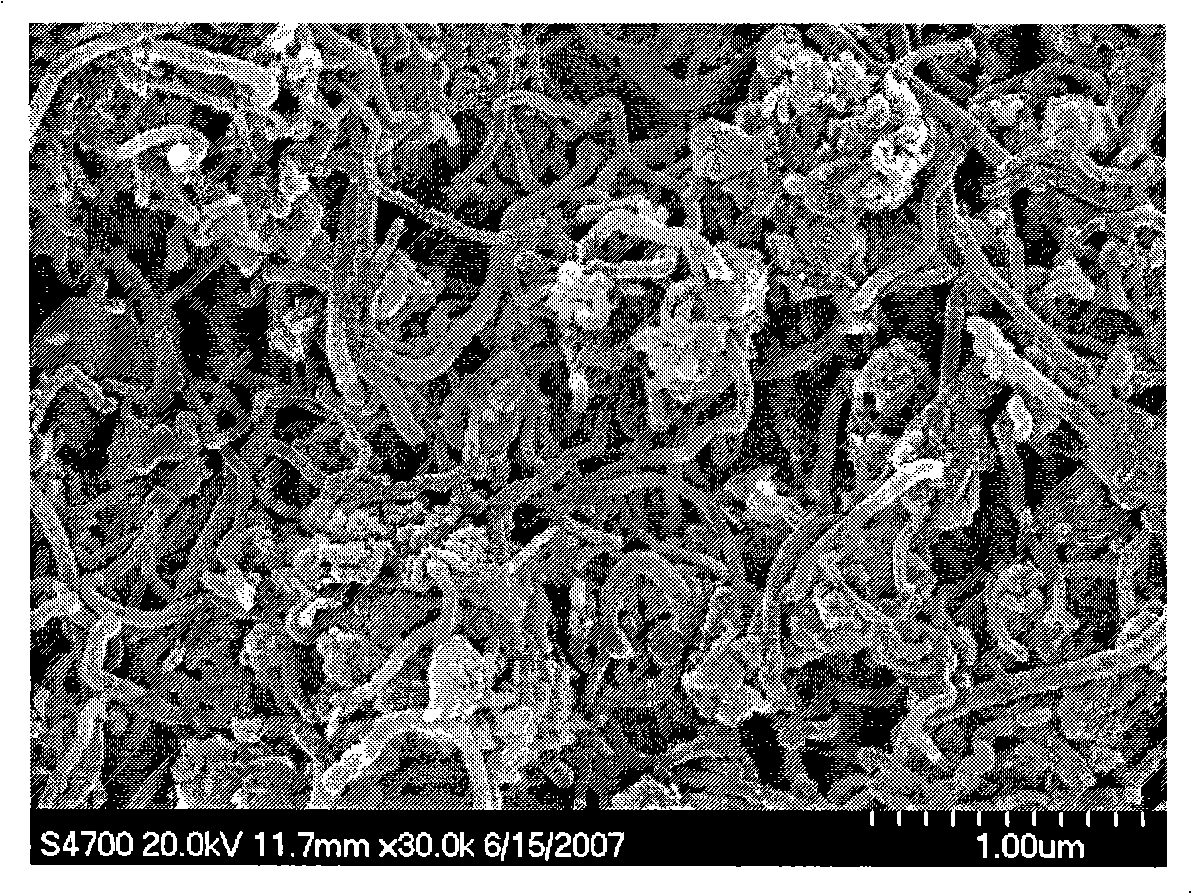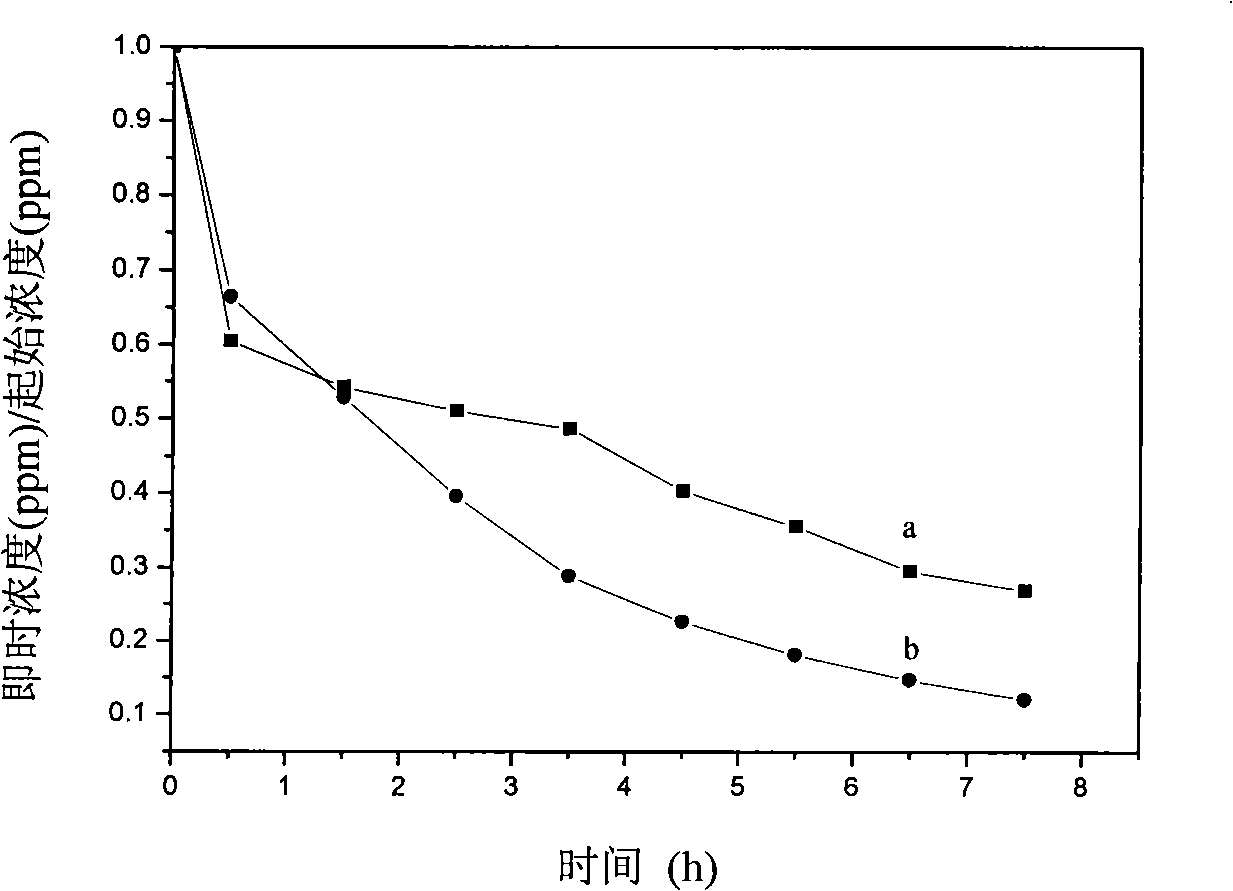Carbon nano-tube composite material and uses for photocatalysis degradation
A technology of carbon nanotubes and composite materials, applied in the direction of physical/chemical process catalysts, chemical instruments and methods, chemical/physical processes, etc., can solve the problems of high cost, unfavorable environmental friendliness, complicated preparation process, etc., and achieve low cost, Environmentally friendly, good catalytic performance
- Summary
- Abstract
- Description
- Claims
- Application Information
AI Technical Summary
Problems solved by technology
Method used
Image
Examples
Embodiment 1
[0030]A. Add 3 g of carbon nanotubes with a diameter of 60 to 100 nm and a length of 5 to 15 μm into a three-neck flask, then add 100 ml of concentrated nitric acid with a mass concentration of 65%, start stirring, condense and reflux for 6 hours, and cool to room temperature after the reaction is completed. Then wash with water and suction filter to pH = 7, and finally dry at 60°C for 6 hours, so as to obtain carbon nanotubes with carboxyl and hydroxyl groups on the surface without impurities.
[0031] B. Prepare two mixed solutions with de-oxygenated deionized water: 1.4874g Zn(NO 3 ) 2 ·6H 2 O and 0.9378gAl(NO 3 ) 3 9H 2 O add 50ml degassed deionized water to prepare mixed salt solution, wherein Zn(NO 3 ) 2 ·6H 2 O and Al(NO 3 ) 3 9H 2 The molar concentration of O is 0.10 mol L respectively -1 and 0.05mol L -1 , In addition, 1.200g NaOH and 1.0599g Na 2 CO 3 Add to 100ml degassed deionized water to prepare mixed alkali solution, in which NaOH and Na 2 CO 3 T...
Embodiment 2
[0036] A. Add 2 g of carbon nanotubes with a diameter of 60 to 100 nm and a length of 5 to 15 μm into a three-neck flask, then add 100 ml of concentrated nitric acid with a mass concentration of 65%, start stirring, reflux for 6 hours, and cool to room temperature after the reaction is completed. Then wash with water and suction filter to pH = 7, and finally dry at 60°C for 6 hours, so as to obtain carbon nanotubes with carboxyl and hydroxyl groups on the surface without impurities.
[0037] B. Prepare two mixed solutions with de-oxygenated deionized water: 13.3862g Zn(NO 3 ) 2 ·6H 2 O and 5.6270gAl(NO 3 ) 3 9H 2 O is added to 50ml degassed deionized water to prepare mixed salt solution, wherein Zn(NO 3 ) 2 ·6H 2 O and Al(NO 3 ) 3 9H 2 The molar concentration of O is 0.90mol L respectively -1 and 0.30mol L -1 , additionally 7.6800g NaOH and 6.3594g NaOH 2 CO 3 Add to 100ml degassed deionized water to prepare mixed alkali solution, in which NaOH and Na 2 CO 3 Th...
Embodiment 3
[0042] A. Add 3 g of carbon nanotubes with a diameter of 40 to 60 nm and a length of 5 to 15 μm into a three-neck flask, then add 100 ml of concentrated nitric acid with a mass concentration of 65%, start stirring, condense and reflux for 6 hours, and cool to room temperature after the reaction is completed. Then wash with water and suction filter to pH = 7, and finally dry at 60°C for 6 hours, so as to obtain carbon nanotubes with carboxyl and hydroxyl groups on the surface without impurities.
[0043] B. Prepare two mixed solutions with de-oxygenated deionized water: 2.2310g Zn(NO 3 ) 2 ·6H 2 O and 0.9378gAl(NO 3 ) 3 9H 2 O is added to 50ml degassed deionized water to prepare mixed salt solution, wherein Zn(NO 3 ) 2 ·6H 2 O and Al(NO 3 ) 3 9H 2 The molar concentration of O is 0.15mol L respectively -1 and 0.05mol L -1 , additionally 1.2800g NaOH and 1.0599g NaOH 2 CO 3 Add to 100ml degassed deionized water to prepare mixed alkali solution, in which NaOH and Na ...
PUM
| Property | Measurement | Unit |
|---|---|---|
| Diameter | aaaaa | aaaaa |
| Length | aaaaa | aaaaa |
| Diameter | aaaaa | aaaaa |
Abstract
Description
Claims
Application Information
 Login to View More
Login to View More - R&D
- Intellectual Property
- Life Sciences
- Materials
- Tech Scout
- Unparalleled Data Quality
- Higher Quality Content
- 60% Fewer Hallucinations
Browse by: Latest US Patents, China's latest patents, Technical Efficacy Thesaurus, Application Domain, Technology Topic, Popular Technical Reports.
© 2025 PatSnap. All rights reserved.Legal|Privacy policy|Modern Slavery Act Transparency Statement|Sitemap|About US| Contact US: help@patsnap.com



